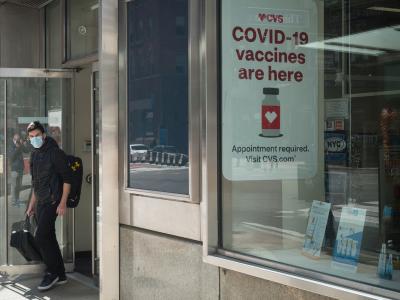Study: H3N2 mutation in egg-based vaccines lowered efficacy
In experiments designed to discover reasons for the relatively low effectiveness of last season's flu vaccine against the H3N2 strain—despite what experts thought was a close match between the vaccine strain and circulating viruses—researchers found that the culprit was a mutation that arose during production when the virus was passaged in chicken eggs.
Researchers based at the University of Pennsylvania reported their findings yesterday in Proceedings of the National Academy of Sciences (PNAS). They found that the egg-adapted virus lacked a key glycosylation site on the hemagglutinin protein. The findings raise concerns, because the same H3N2 vaccine strain is in the 2017-18 flu vaccines and may again provide an underwhelming level of protection. Also, the investigators said the findings underscore ongoing problems with producing flu vaccine antigen in eggs and that antigens grown in systems other than eggs are more likely to protect against H3N2 viruses that are currently circulating.
As part of their study, the scientists found that antibodies elicited in ferrets and humans exposed to the egg-produced 2016-17 H3N2 strain did a poor job neutralizing the viruses that circulated last flu season. However, antibodies elicited in ferrets infected with the current circulating H3N2 strain and humans vaccinated with an H3N2 vaccine produced in a non-egg system were able to recognize and neutralize the new H3N2 virus.
On Oct 23, some of the same researchers were part of another study team based at Scripps Research Institute that described the structure of the mutation using x-ray crystallography. They reported their findings in PLoS Pathogens.
Scott Hensley, PhD, coauthor of both studies and associate professor of microbiology at the University of Pennsylvania's Perelman School of Medicine, said in press release from the school, "Our data suggest that we should invest in new technologies that allow us to ramp up production of influenza vaccines that are not reliant on eggs." Though the flu season could be another difficult one if H3N2 viruses dominate again, he said people should still get vaccinated, because some protection against H3N2 is better than nothing and the H1N1 and influenza B components will likely provide excellent protection.
On Oct 23, some of the same researchers were part of another study team based at Scripps Research Institute that described the structure of the mutation using x-ray crystallography. They reported their findings in PLOS Pathogens.
Yesterday Stat News contacted several experts about current options for producing vaccines that are less likely to contain mutations introduced during the production process and obstacles to moving manufacturing away from eggs entirely. The US government has supported other flu vaccine platforms: a recombinant vaccine (FluBlok) from Protein Sciences and a cell-based vaccine (Flucelvax) made by Seqirus. Experts said obstacles include the expense and regulatory hurdles of shifting to another production method, especially since for now there is little evidence that those flu vaccines are better.
Nov 6 PNAS study
Nov 6 Penn Medicine press release
Oct 23 PLoS Pathog study
Oct 30 Scripps Research Institute press release on PLoS study
Nov 7 Stat News story
WHO weighs in on Marburg virus risk to Uganda, other areas
Uganda's Marburg virus outbreak poses a high risk to the country and neighboring African nations because of a combination of factors, including that the affected districts are near caves in Mount Elgon National Park that are a major tourist attraction and harbor fruit bats that are known to transmit the virus, the World Health Organization (WHO) said yesterday in an announcement.
The affected areas, along with the zoonotic threat, are close to the border with Kenya where cross-border movements are common, the WHO said, adding the outbreak poses a low global threat.
The risk picture requires an immediate, coordinated response with support from international partners, and officials should take note of tourism to Mount Elgon including the caves and give appropriate advice and precautions, the agency said.
Regarding the investigation into the three-case family cluster, two of them confirmed and one probable, the WHO said responders face a tough challenge given the high numbers of contacts in extended families, at healthcare facilities, and from traditional burial ceremonies. One high-risk contact of that patient, a health worker from Kween district in Uganda, has been admitted to a treatment facility. Another of the patients' close contacts reportedly traveled to Kampala, Uganda's capital, where city officials have activated a contact-tracing team.
Though the second confirmed case-patient had traveled to Kenya before he died, no human-to-human transmission has been confirmed outside of Uganda. Active case-finding is under way in the country's Kitale and West Pokot districts, and Kenya's government has activated a Marburg outbreak contingency plan and an emergency operations center.
Uganda's Ministry of Health (MOH) said in a Nov 6 statement that two people who had contact with the second confirmed case—a nurse and a driver's assistant—have tested negative for Marburg virus. Currently, authorities are monitoring 131 patients, 115 from Kween district and 16 from Kapchorwa district.
Nov 7 WHO outbreak announcement
Nov 6 Uganda MOH statement
Camel links continue in latest Saudi MERS cases
The WHO released a new update on recent MERS-CoV cases, noting that 9 out of 12 cases reported from Saudi Arabia in the month of October were linked to camel contact.
None of the cases share an epidemiologic link with other known cases. Both indirect and direct contact, including drinking raw camel milk, was implicated in the nine camel-linked cases. Camel contact is a known risk factor for MERS-CoV (Middle East respiratory syndrome coronavirus).
Since 2012, the WHO has reported 2,102 laboratory-confirmed cases of infection with MERS-CoV, including at least 733 related deaths.
In other MERS news, the World Organization for Animal Health (OIE) reported the detection of MERS-CoV on two camel farms in Taif and Buraydah. A total of 5 of 12 animals tested positive for the virus. It is not known if the animals were tested as part of an ongoing investigation into human cases.
Nov 7 WHO update
Nov 8 OIE report
Groups call for tripling of global TB research funding
Although global funding for tuberculosis (TB) research and development (R&D) reached a high of $726 million in 2016—$105 million over 2015 levels—funding for the deadly disease remains "woefully inadequate," according to a report released today by the New York City–based Treatment Action Group (TAG) and the United Nations–hosted Stop TB Partnership.
The groups launched the report, which details research funding trends from 2005 through last year, a week before high-ranking health officials from more than 90 nations convene in Moscow at the Global Ministerial Conference on Ending TB in the Sustainable Development Era. TB is the world's leading cause of death from a single pathogen, according to a TAB news release. Last month the World Health Organization estimated the disease caused 10.4 million new illnesses and killed 1.4 million people worldwide.
According to the report, funding for global TB R&D climbed steadily from $358 million in 2005 to $637 million in 2009. But from there it stagnated, ranging from $637 million to $686 million from 2009, through 2014 before dropping to $621 million in 2015. It climbed to $726 million in 2016 but was still on a plateau when adjusted for inflation.
The report's authors note, "This figure is not yet large enough for TB advocates to retire the striking statistic that TB R&D receives only one-third of the nearly $2 billion in annual funding called for by the Stop TB Partnership." They say new mechanisms for financing must be found, adding, "Actions taken in the next five years, by political leaders in office today, will determine the trajectory of TB research over the next two decades."
Lucica Ditiu, MD, executive director of the Stop TB Partnership, said in the news release, "We must raise the TB R&D topic on the political agenda, through our continuous advocacy, and the first-ever United Nations High-Level Meeting on Tuberculosis in 2018. And political commitments and discussions must translate into concrete actions. Governments must increase their spending on TB research to develop the innovations we need to end TB."
Nov 8 full report
Nov 8 TAG news release










